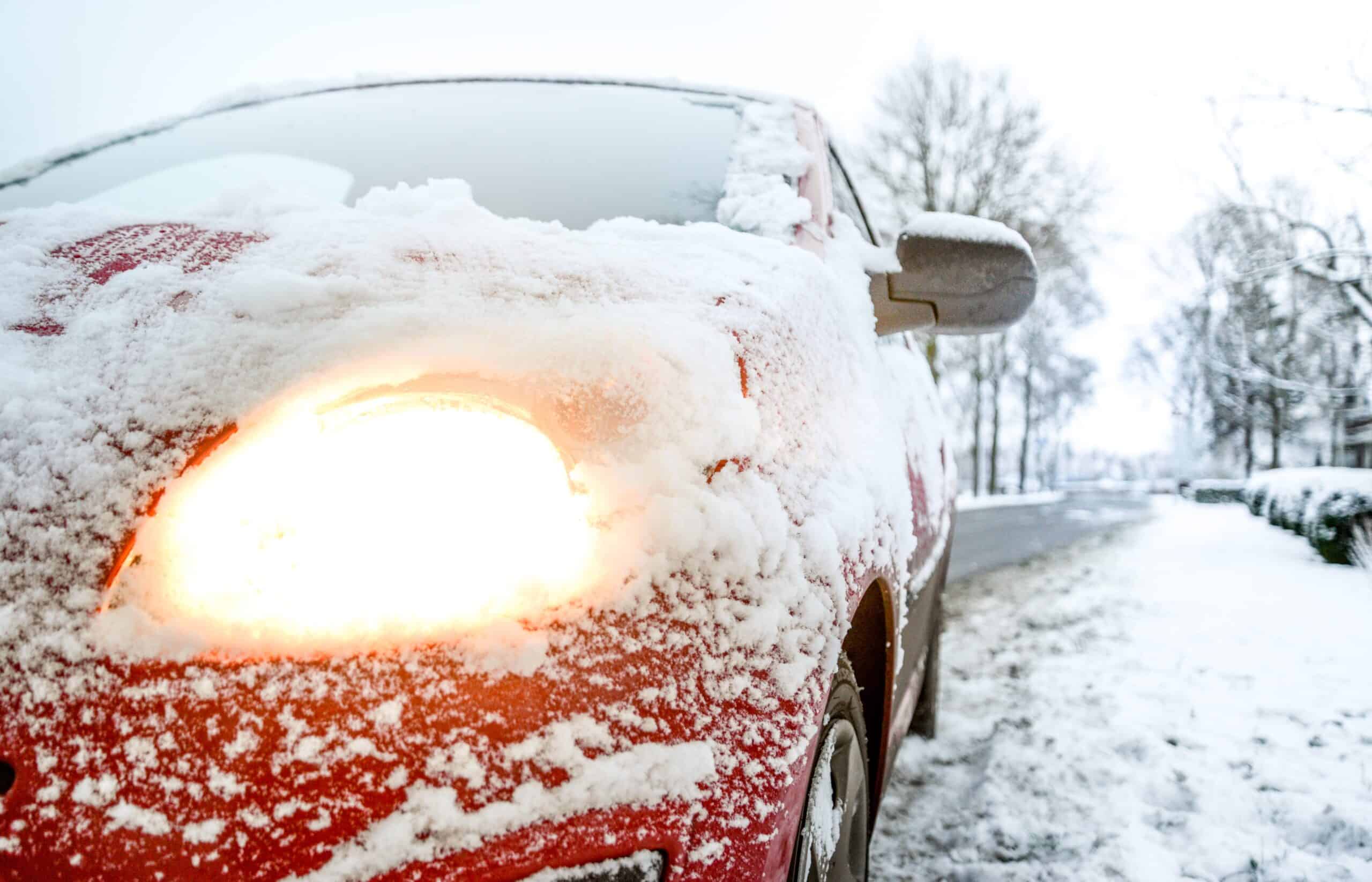Many parts of the U.S. are currently experiencing winter conditions including snow, ice, and extremely cold temperatures. Newcomers may not be familiar with cold weather environments or proper safety methods. This post details resources and considerations for vehicle and transportation safety in winter that service providers can share with clients. This is part two of a two-part series on staying safe in extreme winter weather.
Car Safety
To ensure clients’ cars are prepared for winter, service providers should share the following tips:
- Rotate your tires. In the fall, schedule tire rotations and other car maintenance to check that your car is in good working order. Make sure your tires are inflated properly. Some states, or regional areas within states, may also require specialized snow (winter) tires.
- Secure winter-proof maintenance supplies. Winter-proof windshield wiper fluid, for example, can help you preserve your field of vision behind the wheel during a storm.
- Fill your tank. Try to make sure your gas tank is always full or nearly full.
- Stock your car with an emergency kit. Experts recommend that emergency kits should include:
- Flashlights and batteries, with back-up battery packs available as a precaution;
- Jumper cables;
- Non-perishable food and drinking water;
- Essential medications;
- Warm clothes and blankets;
- A cell phone and phone car charger;
- A first aid kit;
- An ice scraper, snow brush and snow shovel;
- Sand, rock salt, or cat litter;
- A reflective vest;
- Reflective signs or triangles to put near your car to warn others of a breakdown.
Public Transportation: Inform clients that many public buses may be on snow routes, or not working at all, depending on the severity of weather. Other public transit systems may also close or operate on reduced schedules during storms. Discuss how this may impact clients’ transportation to work or school, including when it is advisable to stay home instead of traveling.
Travel Safety
Traveling in poor winter conditions should be avoided if at all possible. If clients must travel, advise them as follows:
- Alert a family member or friend that you are traveling. Let them know what road(s) you plan on taking and what time you should be arriving. Ask them to check on you if you don’t arrive at your scheduled time or have not contacted them when you arrive to your destination.
- Remove any and all ice and snow from your car. In some states, it is illegal to drive with snow and ice on your car. Regardless of the law, removing all ice and snow keeps you and others around you safer.
- When placing infants or small children in their car seats, take off their winter coats and jackets. Leaving these on can make it so that the harness does not properly keep them safe. Additionally, babies can quickly become overheated in the warm car. Instead, cover babies with a blanket, if needed, after strapping them safely in the car seat.
- Allow extra time. Leave early so that you are not rushing.
- Drive slowly, smoothly, steadily, and cautiously. Assume that there is black ice even if you cannot see ice or snow on the road.
- Accelerate and decelerate slowly. It takes longer to slow down on icy roads, so factor that in when stopping at stop signs, red lights, etc.
- Turn on your headlights.
- Reduce distractions. You should never text and drive. Other distractions, such as talking on the phone or listening to the radio, should also be avoided.
- Avoid driving in other vehicles’ tire tracks. These can be icier than fresh snow.
- Keep extra distance between your vehicle and other vehicles.
- Do not follow closely behind snowplows.
- Do not leave your car unlocked and unattended. You may think to leave your car running while making stops on your journey—keeping your vehicle warm for when you return. Be careful: unlocked, unattended vehicles are at risk of carjacking. Stay vigilant of your surroundings.
If you become stranded in your vehicle during your travel, take the following steps:
- If you have a working phone, call 911 for help. Let them know approximately where you are.
- Do not walk away from your vehicle. It can provide you shelter in the cold and help people find you. Walking, especially in a severe storm, can increase your risk of getting lost in the cold or being hit by other vehicles.
- Tie a brightly colored cloth to your car. This will help people see you. If it is nighttime, turn on a small light inside the car.
- Do not try too hard to shovel out your car by yourself. You risk overexerting yourself, which can lead to health issues such as heart attacks.
- With your car turned off, check your vehicle’s exhaust pipe. Clear it of any snow, ice, or mud.
- Stay awake and stay moving inside the car.
- Conserve gasoline. Run the engine for only short periods of time every hour. Keep the window open a crack for fresh air circulation, to help prevent carbon monoxide poisoning.
- Keep yourself warm without running the gas. Use blankets, clothing, floor mats, or anything else in the car instead.
Resources
Emergency Preparedness
- Switchboard: What are the Best Strategies for Emergency Preparedness and Emergency Information Dissemination Among Resettled Refugees?
- Switchboard: Safety Planning and Emergency Preparedness for Refugee Housing
- Welcoming America: Establishing and Maintaining Inclusive Emergency Management with Immigrant and Refugee Populations.
Winter Transportation Safety
- National Highway Traffic Safety Administration: Winter Weather Driving Tips.
- American Red Cross: How Can You Stay Safe While Driving?
Multi-Lingual Tips for Staying Safe
- Settle In: Staying Safe During Freezing Temperatures available in English, Dari, Pashto, Russian, and Ukrainian.
- Settle In: Home Emergency Kit available in English, Dari, Pashto, Russian, and Ukrainian.
- Settle In: What is Black Ice and How Can it Be a Danger for Drivers? available in English, Dari, Pashto, Russian, and Ukrainian.
- CDC: Avoid Spot Treatment: Frostbite & Hypothermia available in English, Dari, and Pashto.
- CDC: Winter Weather and Stay Safe and Healthy in Winter available in English and Spanish.
- Ready.gov: Winter Weather available in 11 languages.
- International Institute of Buffalo: Be Prepared for Snow available in 13 languages.
Assistance Programs










